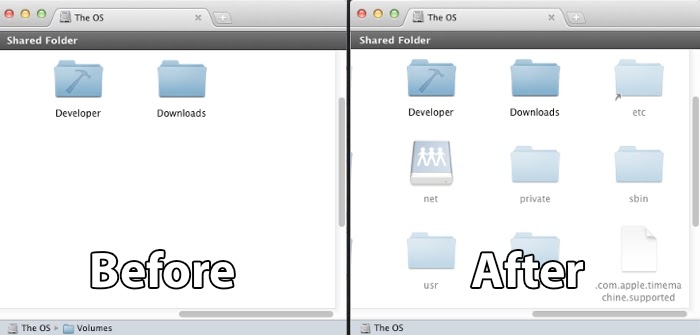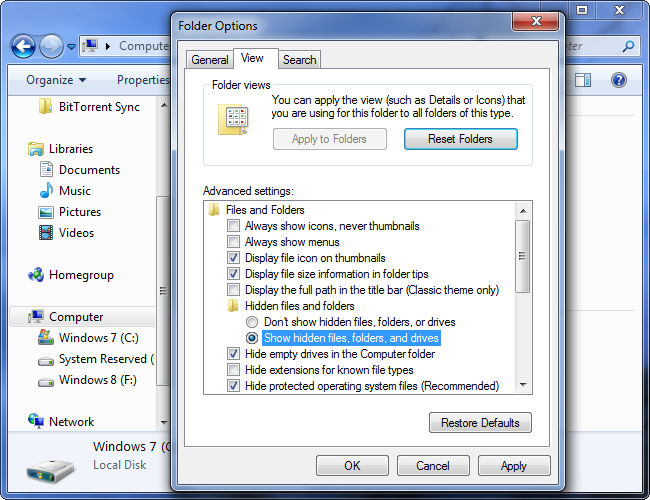May 24, 2019 This app looks and functions similar to the native Finder so it might be easier for you to manage and reveal the files and folders. To view the hidden files, select View, then Viewing Options at the bottom of the menu. Tick the box in front of the “Show hidden files” option and you are good to go. Download Show Hidden Files app from the Mac App Store. Install and launch the app. In the search field, input the file or folder name. For example, you can type in “cache”. A list of hidden files and folders will be shown to you. Select one item and then click the Show in Finder button or the arrow sign. Dec 25, 2019 Show Hidden Files Mac with Keyboard Shortcut. You can use keyboard shortcut to easily show hidden files and hide them on Mac. In Finder, you can press Command + Shift +. To show hidden files. If you want to hide those files again, you can press this shortcut again. This method applies to macOS Sierra or higher. Unhide Files on Mac with. The top box allows you to toggle between showing and hiding files that have been designated as hidden on a mac. Just click the appropriate button, and the program will execute the two commands above. Pretty simple. This app now also gives you control over which files / folders are visible when the AppleShowAllFiles flag is set to NO. Feb 21, 2020 If you are a Windows user, refer to recover hidden files on PC to make hidden files show up on your Windows computer. View Hidden Files on Mac With Finder. When you want to see the hidden files, this is the quickest way to find the hidden files. Open a new Finder window and click on the name of your Mac under 'Devices' in the.
WhatsaByte may collect a share of sales or other compensation from the links on this page.
The show hidden files Mac OS X guide!
Did you know how to show hidden files on Mac OS X computer yet? It’s not similar to what you do in Windows. There is a bit more complicated and require you to type a few commands in Terminal in Mac OS X to show those hidden files.
My story is that I just switched to Mac OS X a few months ago. At that moment, I was just learning how to use this new operating system, from how to install or uninstall apps, copy and paste files, as well as, take screenshots. One day, I was wondering how to view system files that are hidden like in Windows? With the help of Google and information from a few sources, show or hide hidden files never been easier, especially doing that using short alias commands instead of typing long commands, which aren’t easy to remember.
In Mac OS X, by default, all files that starting with a dot (“.”) before the file name are always invisible, including .bash_profile, .svn directory, or even .htaccess file. If you want to access these files, you need to make it visible.
[full-related slug1=”how-to-print-screen-mac-os-x” slug2=”how-to-force-quit-mac-apps-with-shortcut”]Before reading this guide, you may think to make hidden files to viewable is hard. But don’t worry! Today, I write this simple guide to show you the easiest way to show hidden files on Mac OS X computer. You only need to type a few long commands in Terminal application once. Next time, you just need to use showFiles and hideFiles commands to show or hide hidden files on Mac.
Use Terminal Commands To Show Hidden Files Mac OS X
To show hidden files on Mac, click on the Finder icon in the bottom Dock and then go to Applications > Utilities and then open Terminal application.
In the next step, type the command below, or just copy & paste it, and then press the Enter key.
defaults write com.apple.finder AppleShowAllFiles YES
Next, press and hold the “Option” key, and then right-click on the “Finder icon” in the bottom dock and select “Relaunch“.
This action will refresh the Finder and show all hidden files on Mac OS X. If you want to hide these files again, type the following command in Terminal:
defaults write com.apple.finder AppleShowAllFiles NO
Show Hide Hidden Files App Mac
If you can remember these commands, it’s very easy for you to show or hide hidden files. However, in case you can’t remember these commands, you will have to search for it on Google whenever you need to show or hide these files.

Show And Hide Hidden Files On Mac OS X With Terminal Aliases
What’s a Terminal alias? It’s a shortcut for one or more commands. By creating aliases for the show hidden files or hide hidden files commands, you only need to remember aliases, and then you can show or hide files quicker.
To create aliases, open Terminal and then type:
sudo nano ~/.bash_profile
Show Hidden Files Application Support Mac
It will ask you to provide the administrator’s password. Just enter your password and press the Enter key on your keyboard.
At the end of the .bash_profile file, just paste these code:

alias showFiles=’defaults write com.apple.finder AppleShowAllFiles YES; killall Finder /System/Library/CoreServices/Finder.app’
And then:
alias hideFiles=’defaults write com.apple.finder AppleShowAllFiles NO; killall Finder /System/Library/CoreServices/Finder.app’
In the next step, press Control + O (or Ctrl + O) and then press Enter to save the modification on the file.
Next, press Control + X (or Ctrl + X) to exit the editor to return to the Terminal window.
In the Terminal, type:
source ~/.bash_profile
to make two above aliases available.
In the next time when you want to show hidden files or hide hidden files, just type:
showFiles
or
Find Hidden Files On Mac
hideFiles
in Terminal, respectively.
showFiles and hideFiles to Show or Hide Hidden Files Mac OS X
With these aliases, it will help you to speed up the show or hide hidden files process. You can also create aliases for long commands in Terminal to do any tasks quicker.
If you have any questions about this show hidden files Mac guide, feel free to ask me by leaving your comment below.